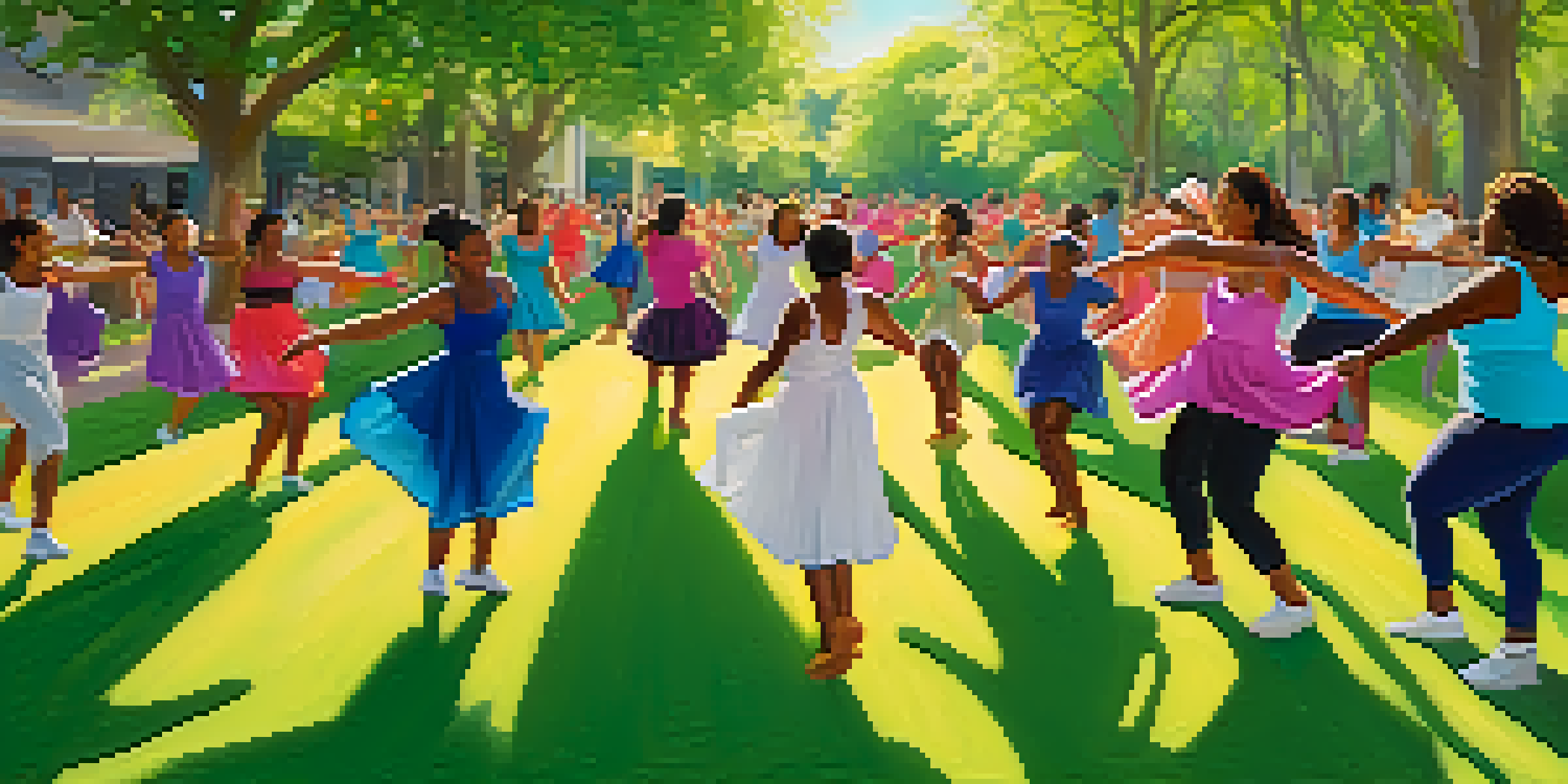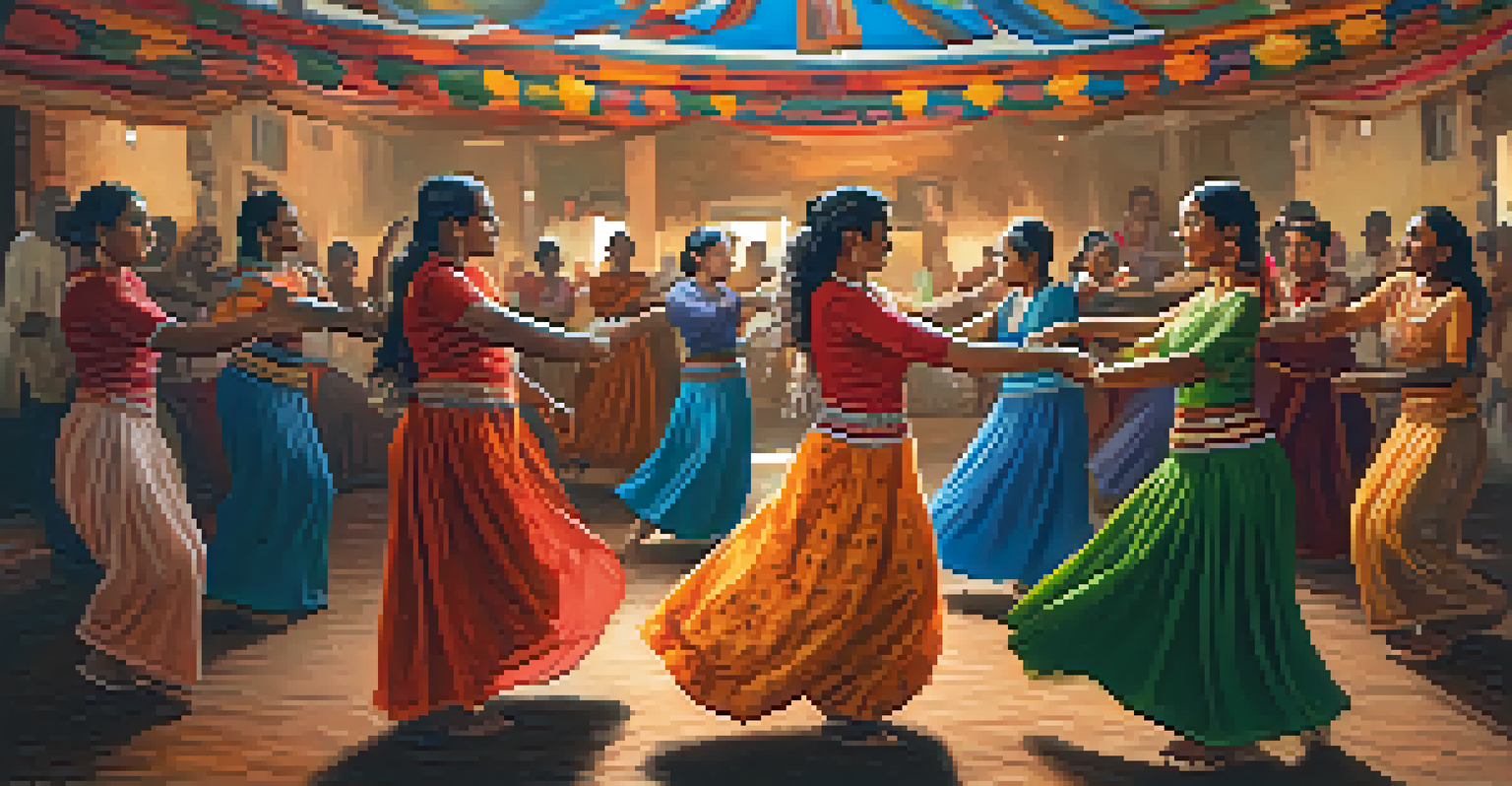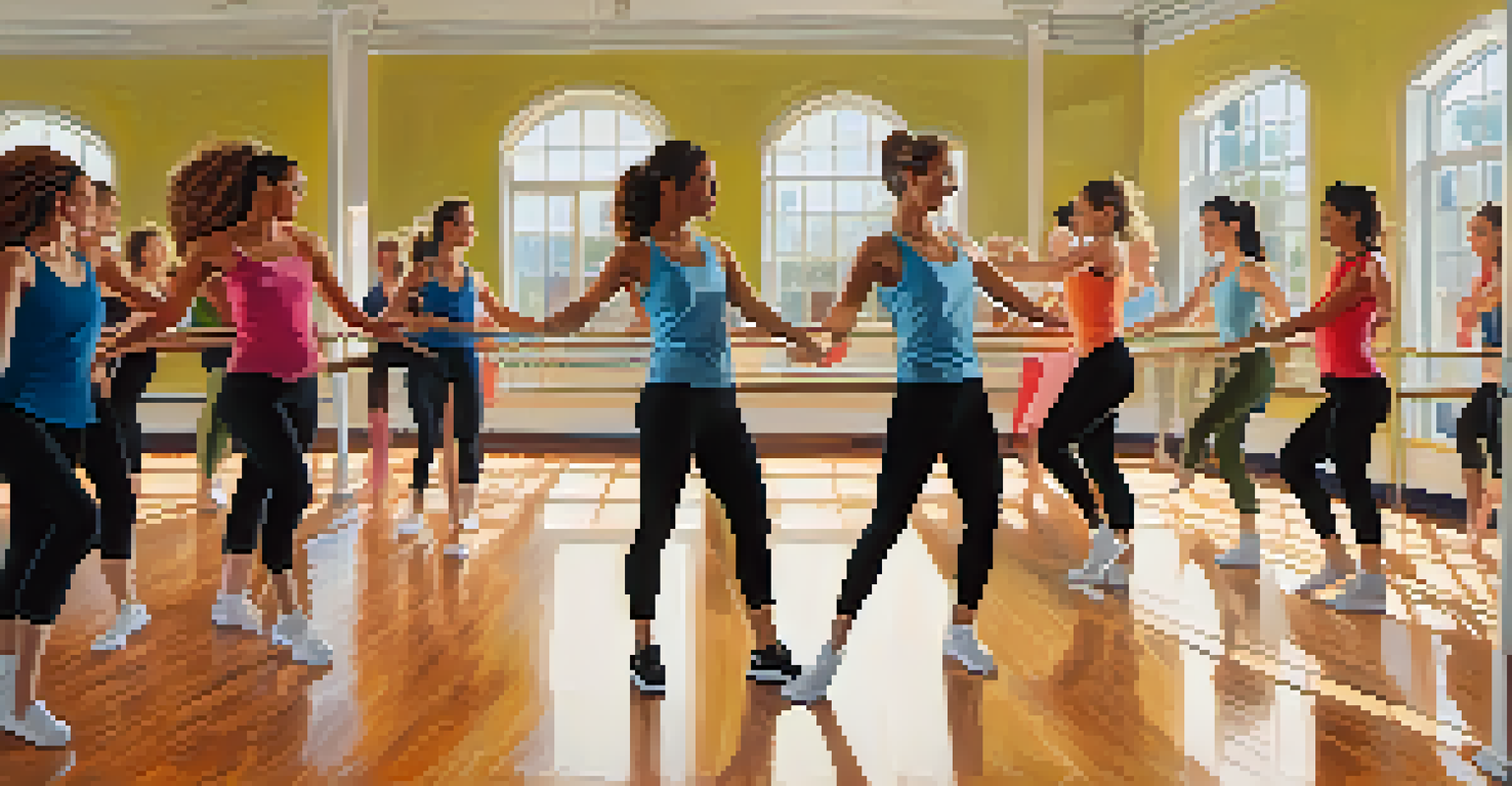Empowering Women Through Dance Initiatives in Global Health

The Intersection of Dance and Global Health Initiatives
Dance is more than just movement; it’s a powerful tool for health and community building. In many cultures, dance serves as a form of expression and social connection. By integrating dance into global health initiatives, organizations can engage women in a way that resonates with their cultural identities.
Dance is the hidden language of the soul.
This approach not only promotes physical health through increased activity but also fosters emotional well-being. Women who participate in dance programs often report feeling empowered, connected, and more in control of their health. As they learn to express themselves through dance, they also gain confidence in addressing their health needs.
Moreover, these initiatives can break down barriers to healthcare access. By creating a safe and welcoming environment, dance programs can attract women who might otherwise feel isolated or marginalized, paving the way for vital health education and services.
Building Community Through Dance Programs
Community plays a crucial role in women’s health, and dance can be a catalyst for building strong bonds. Dance programs create a space where women can come together, share experiences, and support one another. This sense of belonging can be especially beneficial for women facing challenges like social stigma or health issues.

Through shared rhythm and movement, participants often find common ground that transcends language and cultural barriers. This unity can lead to collective action, where women advocate for their health and rights within their communities. For example, in some regions, dance groups have even organized health fairs and workshops focused on women’s health issues.
Dance Enhances Women's Health
Integrating dance into health initiatives promotes physical activity, emotional well-being, and empowers women to take control of their health.
Ultimately, the community aspect of dance programs fosters long-lasting friendships and support networks. These connections can be a lifeline for women, providing them with resources and encouragement to prioritize their health and well-being.
Dance as a Tool for Health Education
Health education is vital for empowering women, and dance initiatives can deliver this education in engaging ways. By incorporating health messages into dance routines, organizations can communicate important information about nutrition, reproductive health, and disease prevention. This method makes learning fun and memorable.
The body says what words cannot.
For instance, some programs use dance to illustrate the benefits of physical activity, while others focus on healthy lifestyle choices. This interactive approach allows women to absorb information while enjoying themselves, making the education process less daunting. It also encourages participation, as women are more likely to engage in discussions when they are having fun.
Furthermore, this blend of movement and learning helps to reinforce healthy behaviors. When women associate health education with positive experiences, they are more likely to take those lessons to heart and make healthier choices in their daily lives.
Promoting Mental Health Through Dance
Mental health is an often-overlooked aspect of overall well-being, but dance initiatives can play a significant role in its promotion. Dance allows for self-expression and emotional release, which can be incredibly therapeutic. Women participating in these programs often find solace in movement, helping to alleviate stress and anxiety.
In many societies, mental health issues carry stigma, making it difficult for women to seek help. Dance provides a non-verbal outlet for emotions, enabling women to process their feelings in a supportive environment. This can be especially impactful for survivors of trauma, as dance allows them to reclaim their bodies and their narratives.
Community Building Through Dance
Dance programs foster a sense of belonging and support networks among women, helping them address health challenges collectively.
Moreover, the joy of dancing can lead to improved mood and increased resilience. As women engage in dance, they often experience a boost in self-esteem and a greater sense of agency over their lives, contributing to lasting mental health benefits.
Cultural Significance of Dance in Women's Empowerment
Dance is deeply rooted in cultural traditions around the world, and recognizing this can enhance its impact on women's empowerment. Many dance forms convey stories, values, and histories that resonate with women, creating a sense of pride and identity. When women engage in cultural dance, they often feel a stronger connection to their heritage, which can be empowering.
By celebrating cultural expressions through dance, programs can foster a sense of belonging and purpose. This connection to culture can inspire women to take charge of their health and advocate for their rights within their communities. For example, traditional dance forms can be revitalized to include messages about health and wellness, weaving empowerment into the fabric of culture.
Additionally, cultural dance initiatives can attract attention and resources to women's issues. When these programs gain visibility, they can mobilize support and create dialogue around the challenges women face, amplifying their voices in the global health conversation.
Success Stories: Dance Initiatives Making an Impact
Across the globe, many dance initiatives have made significant strides in empowering women and promoting health. For instance, programs like 'Dancing for Health' in Africa have successfully combined traditional dance with health education, leading to increased awareness of HIV prevention among young women. These success stories highlight the effectiveness of dance as a tool for social change.
In the United States, community-based dance projects have focused on mental health, providing safe spaces for women to express themselves and seek support. By sharing their stories through dance, participants have not only healed individually but also inspired others to join the movement. These examples showcase the transformative power of dance in various contexts.
Dance as a Health Education Tool
Incorporating health messages into dance routines makes learning about nutrition and wellness engaging and memorable for women.
As these initiatives continue to grow, they pave the way for more women to access health resources and support networks. The ripple effect of these programs can lead to healthier communities, where women uplift each other and advocate for comprehensive health solutions.
Future Directions for Dance and Women's Health Initiatives
Looking ahead, the potential for dance initiatives in global health is vast. There is an opportunity to integrate technology, such as virtual dance classes, to reach women in remote areas who may not have access to local programs. This could help bridge the gap between women and health education, no matter where they are located.
Collaboration with healthcare professionals can also enhance the effectiveness of these initiatives. By working together, dance programs can ensure that the health messages they convey are accurate and relevant, helping women make informed choices about their health. This partnership can add credibility and depth to the initiatives.

Ultimately, as we continue to explore the intersection of dance and women's health, the focus should remain on empowerment and community building. By nurturing these values, dance initiatives can create lasting change, fostering a generation of women who are healthy, informed, and empowered to advocate for their rights.